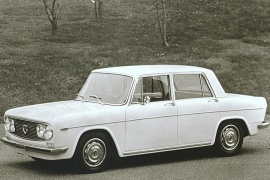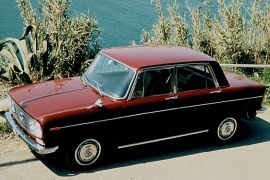LANCIA Fulvia Berlina Models/Series Timeline, Specifications & Photos
First production year: 1963
Engines: Gasoline
Lancia introduced the Fulvia Berlina (sedan) as an executive car, and it was a technologically advanced vehicle for its times.
The Italian carmaker was much known for its sports cars and its technological achievements over time. It built unit-body vehicles in 1922 and installed a V-4 engine since WWI. Back in the '60s, Lancia had three lineups, and the Fulvia was the one that sat on top. It was the car driven by the company's management. Six years after the initial launch, the vehicle went through some changes.
From the outside, there was a charming simplicity. Without its badges, only the reversed trapezoidal grille would resemble the brand. Its four round headlights were similar for many other cars, including Fiat or Alfa. The rounded edges of the bodywork and the greenhouse's simple look made the vehicle look bland but not dull.
Inside, the Fulvia was incredibly spacious for a car from its times. Since it featured a front-wheel drive, there wasn't any transmission tunnel to cross the vehicle from front to the back, allowing the carmaker to build the Fulvia with a flat floor. There were two flat seats at the front and a bench in the rear. Its leatherette upholstery was offered as an option, while the standard Fulvia featured cloth seats. The dash panel was flat and low mounted, with a linear speedometer and a few gauges for the coolant temperature, oil pressure, ammeter, and fuel-tank.
Under the hood, Lancia installed a 12 degree V4 engine angled at 45 degrees. Its 1.3-liter displacement may have seemed too small, but it offered more power than many 2.0-liter engines from that era.
Designed to replace the ageing Lancia Appia, the Lancia Fulvia 4-door sedan was released in 1963 and was built in the Lancia’s new factory in Chivasso.
Despite a not particularly attractive exterior design, the Fulvia was equipped with ahead of the time mechanics, such as four-wheel disc brakes, a synchomesh gearbox and a fully independent suspension.
Like the Flavia, the Fulvia had a front-wheel-drive system and was powered by a longitudinally-mounted V4 engine with a single cylinder head. With a total displacement of 1091 cmc, the small V4 provided a maximum power of 58 hp, which was enough to propel the aerodynamic Fulvia to a maximum speed of 138 km/h.
With customers asking for a more powerful Fulvia, Lancia introduced the 2C version in 1964. The 2C model had 71 hp and the top speed went up to 145 km/h.
Aesthetically, the Fulvia 2C featured slight design updates such as the absence of the bolts on the bumpers, as well as the identification plate on the grille.
Inside, the 2C featured a mechanical tachometer that was mounted on the dashboard.
While the first version of the Fulvia was still available for sale, it was no longer requested by the customers. To avoid loss, Lancia converted the Fulvia into the Fulvia C2, thus many of the C2s had the characteristics of a 1C (1963 model).

